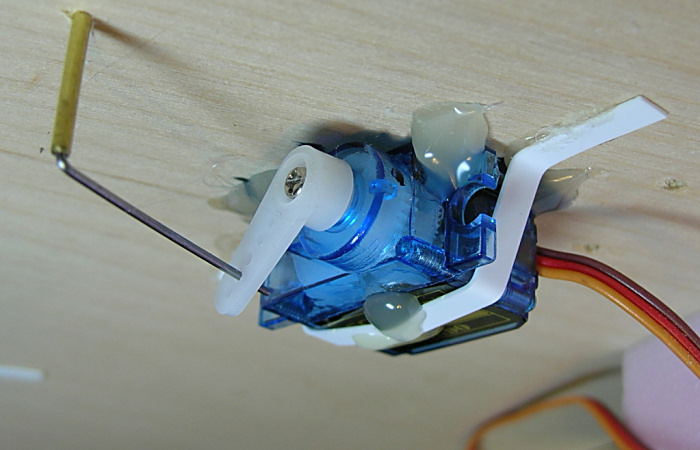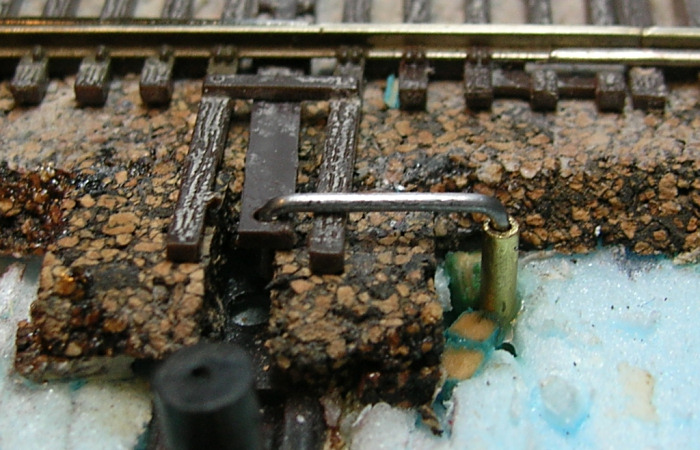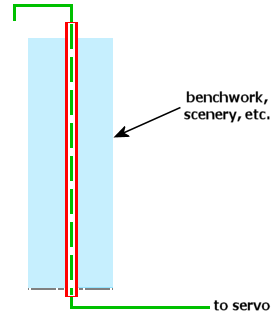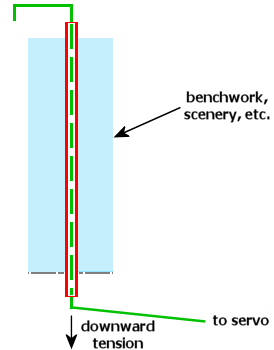1. How can these be used w/o the brass 'sleeve' for Peco turnouts? Is there any 'direct' method w/o using a bent piano wire?
I used the brass-tubing-music-wire method because I was adding the servos to turnouts that were already glued down to the layout. It seemed like the easiest solution. If installing the servo at the same time you are installing the turnout, see the following link for the recommended "direct" method.
http://www.tamvalleydepot.com/products/servosaccessories.html
2. If/when the servo takes a dump, how easy is it to pry it off the board?
Easy; a little prying with a screwdriver, and the servo pops right off. The reason I add a homemade styrene strap over each servo is to make it
more difficult to remove the servo. It was too easy. By the way, I no longer use hot glue on the security strap. Instead, I affix each end of the strap to the plywood with #4 wood screws. Less messy, and easier to replace a servo if necessary. Except for one bad servo that I pulled from my model airplane junk box, I have not had to replace a servo.
3. Can something other than hot glue be used or is it a issue with setting up time?
If you don't like hot glue, you can purchase a mounting kit for the servos, available at the link above. Personally, I like hot glue a lot. I install the brass tube and music wire first, then use it to determine the servo location. To mount a servo, I hold it in place without any glue and use a Sharpie marker to trace the desired location onto the plywood. This serves as a guide for placing the servo. Then I apply the hot glue and press the servo against the plywood, aligning with the Sharpie markings. Wait a few seconds for the glue to set, then you are done. The hot glue makes for quick installation.
4. If it found the servo is positioned incorrectly, or has to be 'tweaked' afterwards, what then?
Using the brass-tube-and-music-wire actuator, the position of the servo does not need to be very precise. I don't bother measuring anything; I just eyeball it and use the method described in the previous paragraph. If you are way off, pop off the servo and try again. Not a big deal. If you are using the "direct" method to actuate the turnouts, then accurate servo placement is very critical. Not so with the brass-tube-and-music-wire method, which is quite forgiving. I do make sure the servo is centered in its range of motion before mounting it.
I never used hot glue before, I assume it sets within seconds where as caulks take an extended period of time which is the problem.
Yes, I use hot glue precisely because it sets up very quickly. I'm a big fan of caulk and use it extensively elsewhere on the layout; it's just not the best adhesive for mounting servos.
- Jeff






